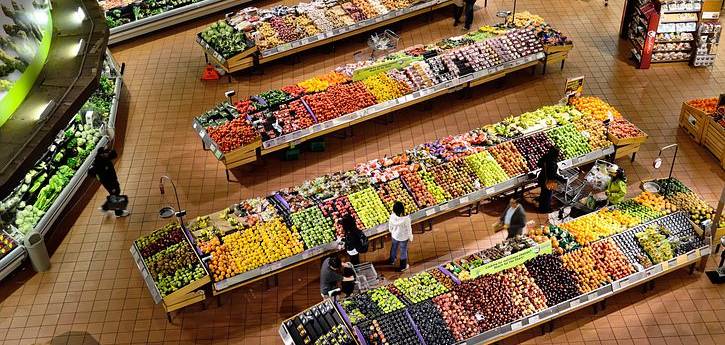|
The EU wastes more food than it imports, damaging EU food security amid the cost-of-living crisis, shows a new report from environmental organisation Feedback EU published today [1].
In 2021, the EU imported almost 138 million tonnes of agricultural products, costing €150 billion [2]. At the same time, the report ‘No Time to Waste’, based on the most up-to-date sources, estimates that the EU wastes 153.5 million tonnes of food each year. This figure is nearly double previous estimates, due to better availability of data on food wasted on farms. Official EU figures still exclude most on-farm food waste from EU member state measurement and reporting.
Food waste costs EU businesses and households an estimated €143 billion a year [3] and causes at least 6% of the EU’s total greenhouse gas emissions [4]. An estimated 20% of EU food production is currently wasted [5]. Halving EU food waste by 2030 could save 4.7 million hectares of agricultural land [6].
In light of this food waste scandal, an international movement of 43 organisations from 20 EU countries issued today a joint statement [7] calling on the EU to introduce legally binding targets for member states to cut EU food waste from farm to fork by 50% by 2030, within scope of current reporting, and review extending reporting to cover all on-farm food waste. The signatories include NGOs Feedback EU, the European Environmental Bureau and Zero Waste Europe, food waste businesses Too Good to Go and OLIO, and members of the EU Platform on Food Losses and Food Waste – the EU’s official advisory body on food waste.
The Commission is due to make a proposal for legally binding food waste targets for EU member states later this year, with formal adoption by 2023 [8]. Negotiations with the European Parliament and Council will then decide on the ultimate targets. If adopted, this will be the first legislation of its type in the world.
Frank Mechielsen, Executive Director at Feedback EU said:
“At a time of high food prices and a cost-of-living crisis, it’s a scandal that the EU is potentially throwing away more food than it’s importing. The EU now has a massive opportunity to set legally binding targets to halve its food waste from farm to fork by 2030 to tackle climate change and improve food security. Setting targets lower than 50% would be planning to fail to meet Sustainable Development Goal 12.3. It’s critical that targets include waste on farms and from processing and food service businesses – if the EU limits targets to covering only retail and consumer food waste, our report finds that between 48-76% of total EU food waste would be excluded, which would leave most businesses causing food waste in supply chains unaccountable for food waste reduction.”
Piotr Barczak, Senior Policy Officer at European Environmental Bureau, said:
“All EU countries had committed to halve food waste within the United Nations’ Sustainable Development Goals. However, almost ten years later, they have not achieved much, and our economies still generate incredibly high amounts of food waste. The EU must urgently include measures in the EU Waste Directives to cut food waste along the whole supply chain - including production processing and food services.”
Martin Häusling, Member of European Parliament and agricultural policy spokesman for the Greens/European Free Alliance (EFA) group, said:
“The European Commission has committed to halving food waste by 2030. However, it is not enough to set ambitious goals without ensuring their achievement with concrete legislative proposals, which need to be drafted by the European Commission in the upcoming months. In its resolution on the Farm to Fork strategy, the European Parliament made it clear that levers such as revising the best-before date must be approached in an ambitious manner. We furthermore need binding targets at every stage of the supply chain to achieve the necessary food waste reduction.”
|







Comments